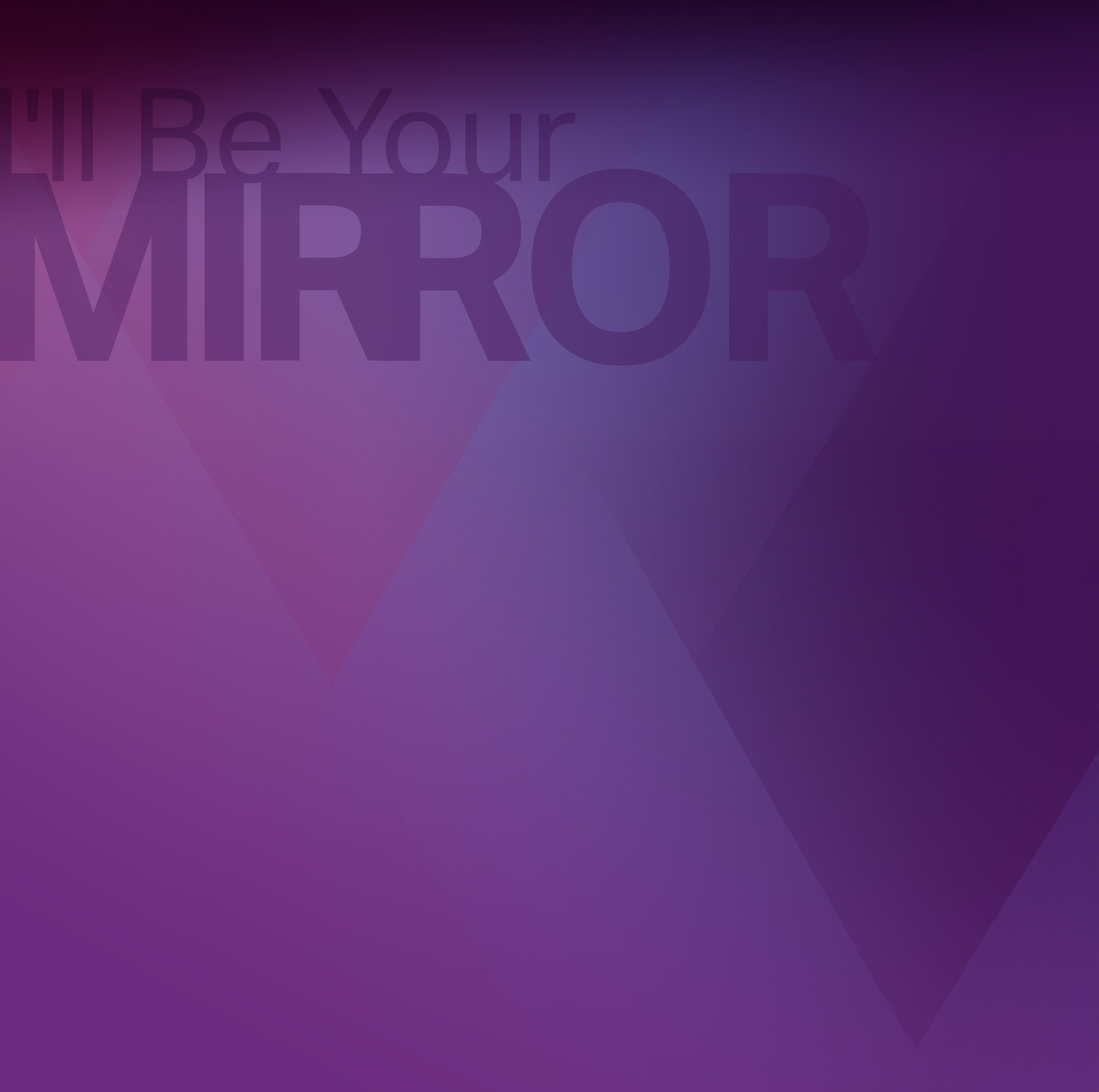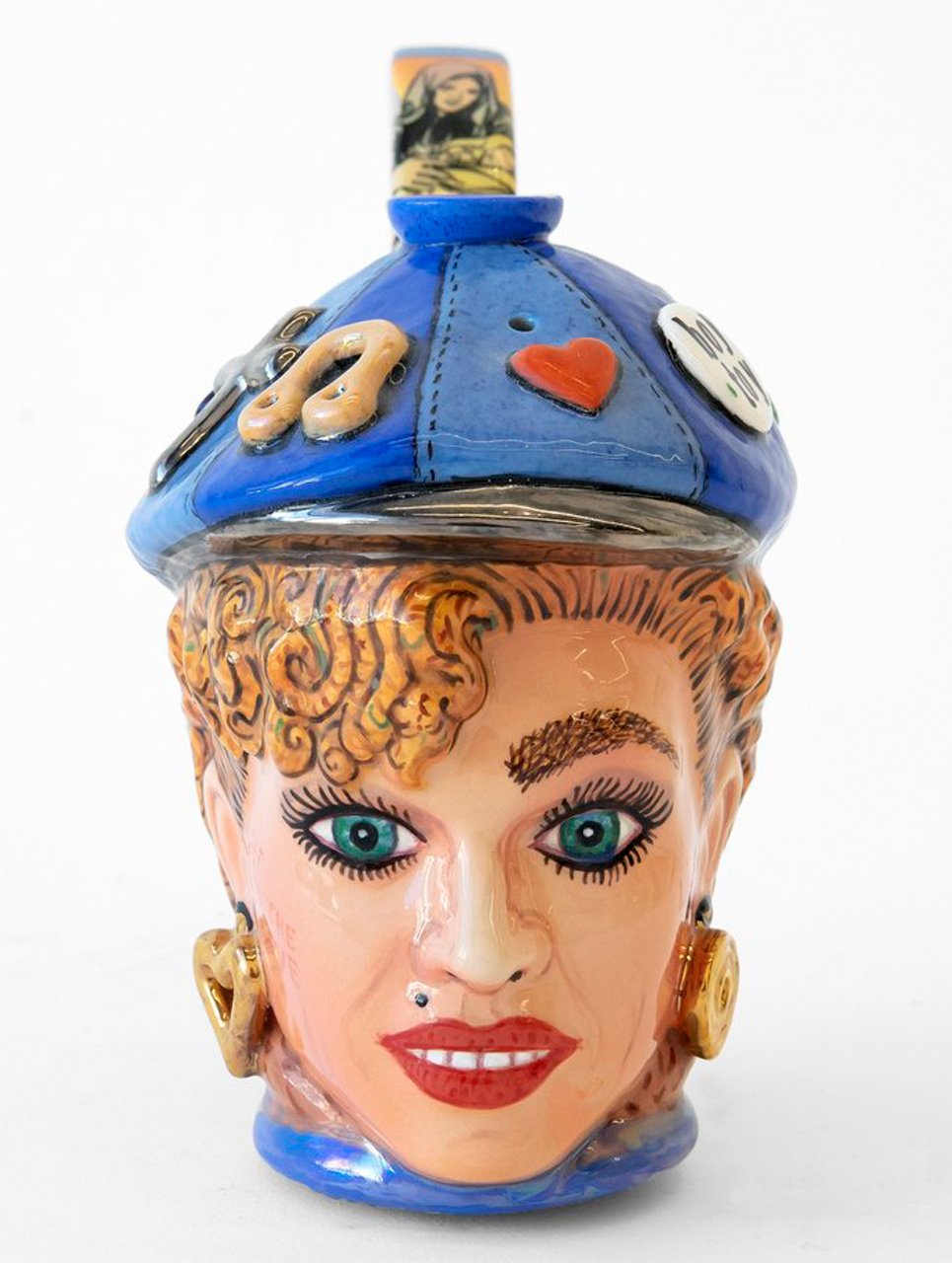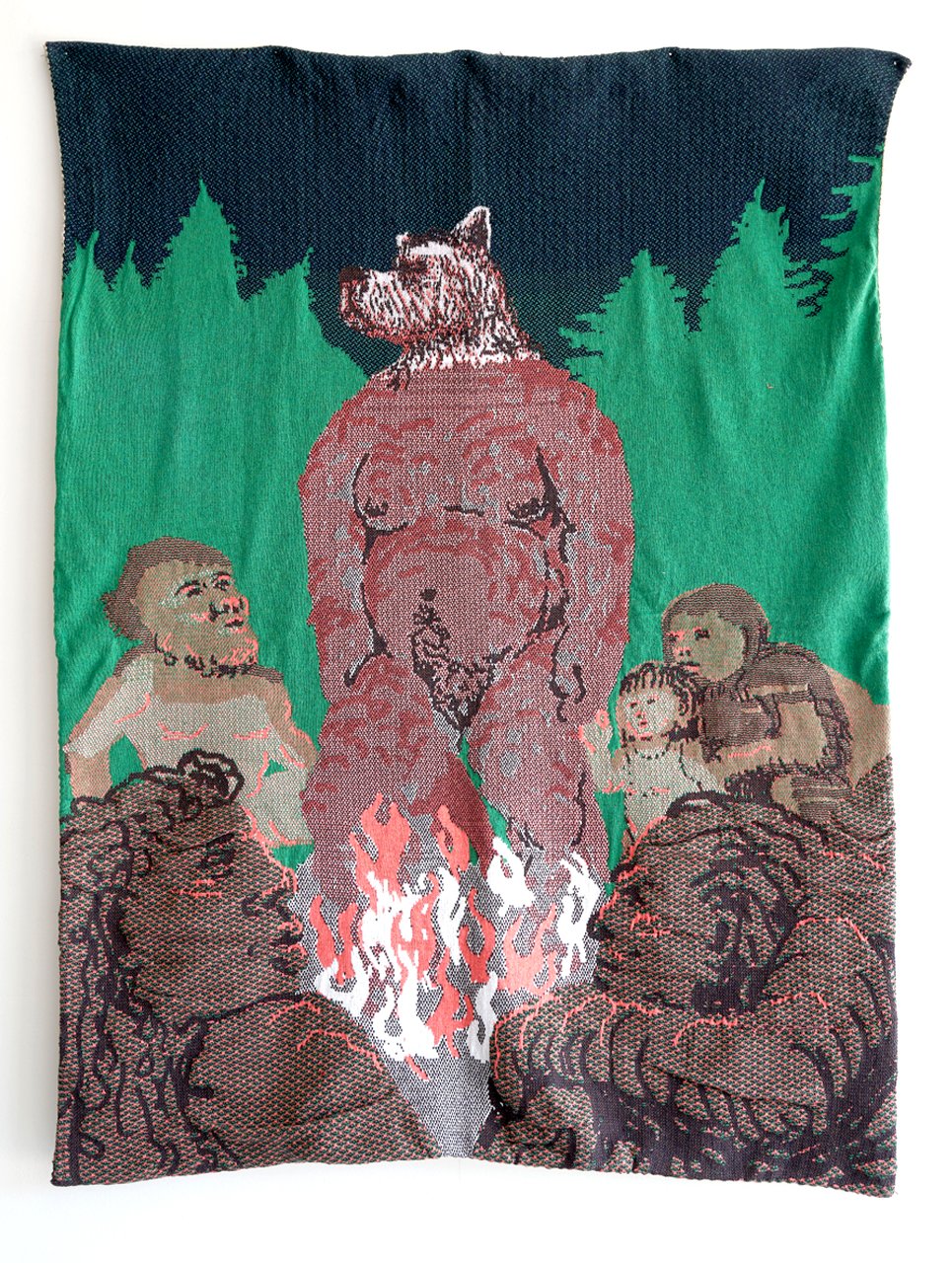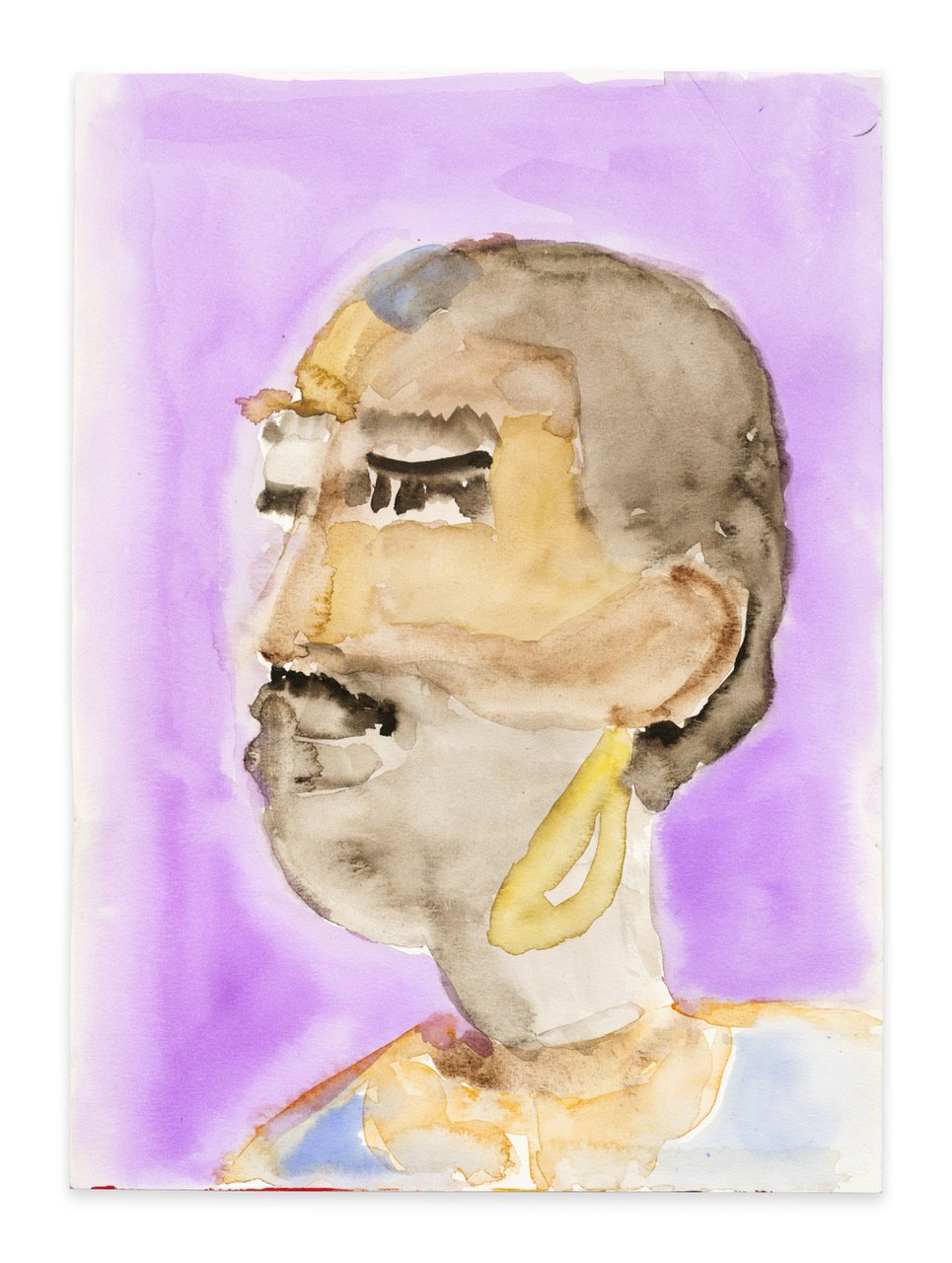
2024: I’ll Be Your Mirror
—Reflections of the Contemporary Queer
This biennial included over 170 artists spread across 11 galleries, with an emphasis on national and international artists. The show explored the aesthetic mirroring between art and the viewer and highlighted the role of art in achieving personal visibility and social connection. The diverse representation of artists and the thematic focus on the relationship between art and viewer made MR/QD’s I'll Be Your Mirror: Reflections of the Contemporary Queer a significant event in the art community.

John deFazio | Madonna Boy Toy Pipe, 2001

Felix Beaudry | The Fabulist, 2021

Pamela Sneed | Craig Harris, 2022

In June 2022, Mighty Real/Queer Detroit (MR/QD) presented the nation's largest art exhibition to date featuring works by LGBTQ+ artists. The exhibition celebrated 77 years of the Detroit queer art scene—spotlighting 150+ artists with over 700 works that were displayed in 17 Detroit venues.
The 2022 event was a local and regional success, illuminating the rich history and current landscape of queer art in Detroit.
In conjunction with the 2024 Pride celebration, MR/QD charted an expansion of its inaugural exhibition. I'll Be Your Mirror: Reflections of the Contemporary Queer launched the first biannual of Queer art. The 2024 exhibition featured 170+ artists from the USA as well as Asia, Latin America, Africa, and Europe.
May 31 to June 30, 2024
The emergence of Queer art as a studied and celebrated aspect of American art (and life) has been a comparatively recent phenomenon. From the early 1950s to the present, the full recognition of such art would take the combined actions of legal challenges and a fundamental rethinking of science to decriminalize and depathologize Queer sexuality.
The artifacts of Queer life have been traditionally hidden and obscure. The art produced in the early twentieth-century Queer underground has to be hunted down, pulled out of diverse contexts, and made clear in the light of current acceptance, especially where, in recent earlier times, clarity could mean arrest and imprisonment. In terms of art, and art making, there is a lot of curatorial catching up ahead of us. This project is one effort to foster that catch-up.

“Art as Activism”
By patrick burton and Jeff Britting
With Motor City Pride, Detroit—and in cities throughout the country—Queer festivals commemorate the fight for political equality accelerated by a demonstration, which began early in the morning of June 28, 1969, outside the Stonewall Inn, a Greenwich Village gay bar. Today, this demonstration is honored by an annual June event. The social advances made since 1969 are celebrated. And the contributions of political activism are paid tribute. But is there an activism deeper than the Stonewall uprising and its fight against a night of police harassment and injustice?
There is the creation of a just culture. And this rests on art.
Art is a mirror. It shows. It reflects. It embodies self-recognition and affirms presence.
At the start of the 20th century, the Queer presence—the “love that dared not speak its name”—was socially shunned, medically pathologized, and legally criminalized. To be Queer was to be an outsider in a manner deeper than politics. One ducked and steeled oneself alone or gathered in small rural or urban enclaves, stitched together like an Underground Railroad.
The exception was the world of art.
For Queers, art offered a realm where you could confront and express yourself freely when all other opportunities were unavailable.
With art, you could embody or contemplate localities, relationships and social engagement—or protest the lack thereof. You could storm the barricades with banners and ideas—or engage with the intimate, the decorative, the erotic. You could envision communities—or a sphere of solitary reflection—or combinations of both. Art in all forms rendered our view of the universe concrete, including the scope of our possible action, long before the growth of social acceptance and political freedom. Art affirmed a world within reach.
I’ll Be Your Mirror: Reflections of the Contemporary Queer assembles more than 800 such works by 170+ artists in 11 galleries, revealing a range of identities and stories, from the playful to the political, and from the erotic to the domestic.
A selection of these works are displayed here:
Peter McGough’s painted brick is inspired by a verbal assault against the artist on the streets of New York City. In reference to Stonewall and the stoning of sinners, Faggot Bricks, turns the name-calling of “faggot” inside out. Does the brick (or epithet) flung at you cause harm? Or is the brick a piece of the broken world you can pick up and rebuild?
Felicita Felli Maynard’s Ole Dandy, the Tribute, is a series of photographs that incorporate the historical perspective of a non-binary artist. Using vintage camerawork, Maynard references real figures to reimagine the life of a gender-expansive cabaret performer during the Harlem Renaissance.
Tylonn Sawyer’s work, Forever Young: Pulse Night Club 49, memorializes the individuals who lost their lives in 2016 due to an act of domestic terrorism. This massacre, rooted in anti-LGBTQ prejudice, occurred in Orlando, Florida, during Pride month. The 49 portraits are a unified piece, underscoring the scale of tragedy and the reality of grief.
Eileen Mueller’s Wayfinding, portrays trees adorned with trail marks or wayfinders. These markings use a code known to other Queer women and reveal hidden paths to private glades, which offer a chance to engage in communal visibility and acceptance.
Mark A. Vieira's 1979 Portrait of Sylvester captures the late singer in an image used by Fantasy Records without credit. Like many artists of old Hollywood, Vieira shapes a beautiful icon without recognition. Those who know Sylvester’s music can honor both the discothèque and Vieira’s recovery of authorship.
The art exhibited in I’ll Be Your Mirror: Reflections of the Contemporary Queer is a discovery: a dialogue of many voices, a discussion of what it means to be Queer and non-Queer–and, more so, what it means to be human.
The growing social acceptance of Queers, now celebrated each June, was not achieved through legislation alone. The recognition of rights and their social protection is essential. And the details of politics are vital. But the experience of pride, afforded by standing before a mirror to confront one’s very self, is preliminary, whether that self is embodied in a painting, a poem, a film, or music. The activism of art begins with recognizing and affirming the profoundly important. It starts with looking into the mirror, which is art—and returning to that mirror every day of one’s life.
Artists & Galleries
Featured artists and their participating galleries:
Marcel Pardo Ariza
Detroit Artists Market
Marc Arthur
Hilberry Gateway Theatre
Shiloh Ashley
CCS-Center Galleries
Cameron Barker
Anton Art Center
Detroit Artists Market
detroit contemporary
Felix Beaudry
the CARR center
CCS-Center Galleries
Heather Benjamin
Detroit Artists Market
Helen Berggruen
CCS-Center Galleries
Kayrod Gallery
Michael Bilsborough
Galerie Camille
Laicee Blackwell
Anton Art Center
Irwin House Gallery
Jeannine Caesar
Kayrod Gallery
Mavado Charon
Detroit Artists Market
Feather Chiaverini
CCS-Center Galleries
Andrea Costantini
Detroit Artists Market
Stephanie Crawford
Elaine Jacob
John Criscitello
the CARR center
CCS-Center Galleries
detroit contemporary
Christopher Cushman
Detroit Artists Market
Kayrod Gallery
Christa Joo Hyun D’Angelo
Elaine Jacob
Alyssa DeLuccia
CCS-Center Galleries
detroit contemporary
Florence Derive
Detroit Artists Market
Wendy Deutelbaum
Kayrod Gallery
Erika Diamond
Anton Art Center
detroit contemporary
Hatch Art
Darrell J. Dinges
Anton Art Center
Julio Dominguez
Galerie Camille
Thomas Dozol
detroit contemporary
Hatch Art
Eridian Falcone
detroit contemporary
Librada González Fernández
Galerie Camille
Carl Ferrero
Anton Art Center
the CARR center
Hatch Art
DW Fitzpatrick
detroit contemporary
Lola Flash
Kayrod Gallery
Irwin House Gallery
LeRoy Foster
detroit contemporary
Eve Fowler
Detroit Artists Market
Benjamin Fredrickson
Anton Art Center
CCS-Center Galleries
Erik Hanson
CCS-Center Galleries
Boswell Hardwick
detroit contemporary
Hilary Harkness
Detroit Artists Market
Lyle Ashton Harris
the CARR center
Hatch Art
Jesse Harrod
Detroit Artists Market
Elaine Jacob
Clarity Haynes
Anton Art Center
Galerie Camille
Bryan Hoffman
Anton Art Center
Detroit Artists Market
Hatch Art
Rinaldo Hopf
Irwin House Gallery
Kayrod Gallery
Maggie Hubbard
Anton Art Center
CCS-Center Galleries
Scarab Club
Stephen Irwin
the CARR center
Galerie Camille
Doug Johnsonson
Irwin House Gallery
Kayrod Gallery
G.B. Jones
detroit contemporary
Erika Keck
Anton Art Center
Detroit Artists Market
Brian Kenny
Anton Art Center
Detroit Artists Market
Paul Kopkau
CCS-Center Galleries
Katharine Kuharic
Detroit Artists Market
Julia Kunin
CCS-Center Galleries
Marcus Leatherdale
Elaine Jacob
Tom Livo
CCS-Center Galleries
Hatch Art
Evan Lockhart
Anton Art Center
Jacky Marshall
Galerie Camille
Irwin House Gallery
Felicita Felli Maynard
the CARR center
CCS-Center Galleries
Alicia McCarthy
Elaine Jacob
Hatch Art
Marla McLeod
the CARR center
Irwin House Gallery
John McKaig
Anton Art Center
Kayrod Gallery
Groana Melendez
Galerie Camille
Lucas Michael
Anton Art Center
detroit contemporary
Billy Miller
detroit contemporary
Hatch Art
Bobby Miller
Kayrod Gallery
Irwin House Gallery
Slava Mogutin
Anton Art Center
Leon Mostovoy
Detroit Artists Market
detroit contemporary
Kayrod Gallery
Merel Noorlander
Anton Art Center
Joe Ovelman
the CARR center
Elaine Jacob
Scarab Club
Matthew Papa
Anton Art Center
Hatch Art
Matthew Pawlowski
detroit contemporary
Elaine Jacob
Hatch Art
Gabriel García Román
Detroit Artists Market
Carol Saft
Anton Art Center
Kayrod Gallery
Daniel Samaniego
Anton Art Center
Galerie Camille
Marc Santo (revel)
Elaine Jacob
Jesse Satterfield
Anton Art Center
Irwin House Gallery
Tylonn J. Sawyer
Galerie Camille
Zena Segre
Detroit Artists Market
Wayne Shimabukuro
Kayrod Gallery
Jeanette Spicer
Anton Art Center
Scarab Club
James Stephens
Kayrod Gallery
Hatch Art
Mingdong Sun
CCS-Center Galleries
Vincent Tiley
Anton Art Center
Elaine Jacob
Sanh Tran
Anton Art Center
the CARR center
Daniel Trese
Anton Art Center
CCS-Center Galleries
Ara Tucker
Detroit Artists Market
Corey Tut
detroit contemporary
Hatch Art
Irwin House Gallery
Mark A. Vieira
the CARR center
Anthony Viti
the CARR center
detroit contemporary
Wilhelm Von Gloeden
Scarab Club
Jan Wandrag
CCS-Center Galleries
Patrick Webb
Anton Art Center
Scarab Club
Jessica Whitbread
detroit contemporary

Thomas Dozol | Jimmy, 14.09.2020, Berlin (01), 2022
Our Team
Creative Director/Curator
patrick burton
Assistant to Creative Director
Jeff Britting
Film/Video Curation
Adam Baran
Billy Miller
Programming
Jetshri Bhadviya
Dalia Reyes
Andrew Jordan
Writing/Editorial Consulting
Jeff Britting
Website
Jan Wandrag
Fundraising/Marketing
Dalia Reyes
Event Producer
Husain Salah
Art Handling and Transportation
Andrew Jordan
Wendy MacGaw
Dave Roberts
Jeffrey Tranchell
Public Relations
Alexander Galan
Vidoun Group
Graphic Design
Jan Wandrag
Jetshri Bhadviya
Andrew Jordan
Linda Simpson | Tabboo! (Detail)



